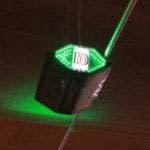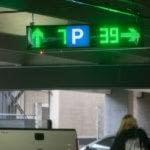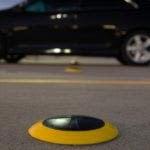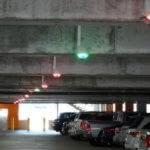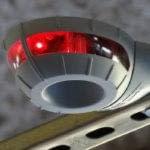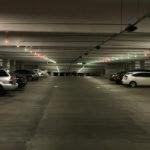Parking enforcement has long been a challenge for many municipalities, businesses, and property owners. From ensuring fair usage to preventing unauthorized parking, the traditional approach often relies on manual labor, leading to inefficiencies and human error. Enter automatic license plate recognition, a cutting-edge technological solution that is transforming parking enforcement practices. At Parking Guidance Systems, we specialize in offering customizable and scalable parking guidance solutions, including LPR, to help streamline parking enforcement processes, all while improving accuracy and efficiency.
What is License Plate Recognition?
License plate recognition (LPR) is a technology designed to automatically read and capture license plates on vehicles using cameras and license plate recognition software. It works by using optical character recognition (OCR) algorithms to identify license plate characters and the state or origin of the plate. These systems are often installed in fixed positions like parking lot entrances or mounted on mobile vehicles for broader coverage. One of these systems is Indect’s Upsolut, a camera-based parking guidance system, which features LPR with advanced artificial intelligence to provide accurate and reliable results.
For parking enforcement, LPR serves as an efficient tool for tracking vehicles, managing occupancy, and ensuring compliance with parking rules, all without the need for manual intervention.
The Benefits of License Plate Recognition Systems for Parking Enforcement
Implementing a license plate recognition system offers several advantages that address common parking problems. Let’s break these down:
Improved Efficiency in Monitoring and Enforcement
Traditional parking enforcement often relies on personnel checking stalls manually, a time-consuming and labor-intensive process. With a license plate recognition system from PGS, camera-based monitoring is integrated into parking sensors throughout the garage, scanning plates instantly. In addition to providing availability status, extended LEDs can also be programmed to flag unauthorized vehicles reducing the time needed to enforce parking rules but also minimizes human error, ensuring accurate tracking of vehicles. Unlike mobile LPR systems that require staff to drive through lots to scan plates, a camera-based PGS provides continuous, real-time license plate data without manual effort. This eliminates the need for mobile patrols and reduces labor hours while enabling features like automated detection of “hot list” vehicles and enforcement of virtual permits.
Real-Time Data Collection and Reporting
An advanced license plate recognition software provides real-time data, enabling parking operators to monitor occupancy rates by user group, identify overstays, and detect unauthorized vehicles instantly. This level of accuracy allows parking enforcement teams to address violations promptly, enhancing overall compliance. Collaborating with law enforcement to identify stolen vehicles and having the ability to tie specific vehicles to certain locations can also assist in solving crimes and increasing security measures.
Increased Parking Revenue
Unauthorized or improperly paid parking typically results in lost revenue for property owners and municipalities. By automating parking enforcement using LPR technology, operators can efficiently detect violations and collect fees accordingly. From sending reminders to issuing fines, the system simplifies revenue collection while discouraging repeat offenders. Better understanding of parking patterns allows for overselling of permits.
A camera-based PGS can also integrate with PARCS to enable premium parking functionality. By identifying vehicles in real time and linking them to designated high-demand spaces, operators can dynamically charge higher rates for premium locations—such as those near entrances or elevators—maximizing revenue and offering added convenience to parkers.
Enhanced User Experience
For visitors and customers, parking should be a seamless experience. With LPR, there’s no need for physical parking passes or tickets. The system can automatically log vehicle information upon entry, streamlining entry and exit processes. A smoother parking experience improves customer satisfaction and encourages repeat visits. Safer, more convenient parking can encourage repeat visitors and improve parker satisfaction. LPR can also support “find my car” features for parkers.
Eco-Friendly Approach
Using automated systems like LPR reduces the need for paper tickets, stickers, and other single-use materials traditionally used for parking enforcement. Additionally, automatic systems reduce vehicle congestion at lots, as fewer manual checks mean smoother traffic flow within parking areas.
Applications of License Plate Recognition
At Parking Guidance Systems, we have implemented LPR technology in various parking facilities to improve efficiency and customer experience. Here’s how LPR can be applied across various setups:
Retail and Commercial Parking
Shopping centers and business districts can use LPR to improve parking availability for shoppers and tenants. The system ensures that spaces are only utilized by authorized vehicles, preventing unauthorized parking and maintaining accessibility for legitimate visitors.
Universities
Universities and colleges can use LPR to regulate parking on campus and enforce permits for students, faculty, and staff. The technology allows for easy tracking of vehicle entry and exit times, helping with overall lot management.
Further, universities can use occupancy data captured by the camera-based PGS to confidently oversell permits without compromising the parking experience. By monitoring real-time space availability, operators can make data-driven decisions that balance permit volume with actual usage, increasing revenue while maintaining access for students, faculty, and staff.
Airports
As airports continue to grow and evolve, efficient parking solutions are essential for managing high vehicle volumes and enhancing the traveler experience. With integrated LPR, a camera-based PGS can support features like “find my car,” helping travelers quickly locate their vehicles in large facilities. This improves convenience, reduces stress, and boosts overall customer satisfaction while maximizing space utilization and revenue.
Event Venues and Stadiums
Large-scale events often require efficient parking management to handle significant numbers of vehicles. LPR technology can streamline, reduce congestion, and ensure parking rules are adhered to during high-traffic events.
The Future of Parking Enforcement is Here
Modern challenges require modern solutions, and camera-based parking guidance systems with integrated license plate recognition (LPR) are redefining how enforcement is done. By combining real-time space monitoring with automated vehicle identification, these systems improve efficiency, reduce labor costs, and elevate the parking experience for users. For businesses and municipalities, investing in a PGS with LPR is a smart step toward data-driven, scalable enforcement that delivers measurable results. Whether your goals are to improve compliance, increase revenue, or reduce operational strain, this technology provides a powerful and reliable solution. To get started:
- Evaluate your parking needs. Determine the user groups occupying your parking assets and specific enforcement goals.
- Train your team to leverage the data and insights provided by LPR for optimized parking management.
Are you ready to transform your parking facility? Contact Parking Guidance Systems today and bring the future of parking enforcement to your organization.



